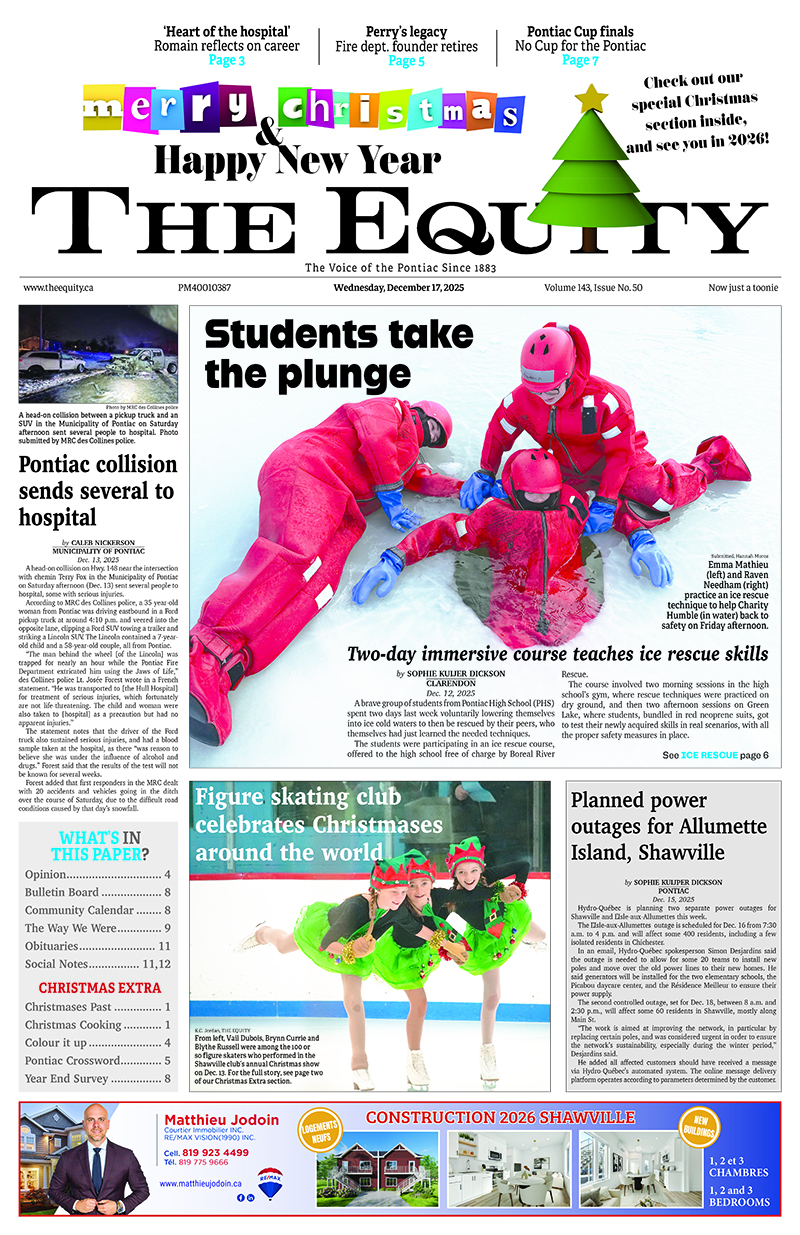Quebec’s environment ministry has adopted a new framework that will be used to define flood zones across the province and regulate what is permitted in each zone.
Under Quebec’s previous regulations, residents could find themselves in flood zones where risk was defined as either a one-in-20-year chance of flooding, or a one-in-one hundred-year chance, a framing of flood probability that was often misunderstood.
The province’s new regulations, adopted last week, create five new flood zones, each defined by factors such as frequency and depth of flood, and each with their own set of rules as to what kind of construction or renovation is permitted in said zone.
The maps indicating exactly where these flood zones will be, however, will not be available to the public until Mar. 2026, when the new regulations will come into effect.
In a press conference on June 12, environment minister Benoit Charette emphasized his government is not creating new flood zones, rather accurately identifying and regulating activity in flood zones that already exist.
“We want to make sure people have the good information about where they live. Today it’s not the case because many of these maps are not up to date,” Charette said.
“Without these changes, you are or you’re not in a flood zone. The risk is not considered. Now, everybody will know exactly what kind of risk they are facing at their residence. So it’s a major change of thinking but it’s for the protection of the people and their goods.”
Charette said while he won’t have a confirmed number until the final maps are released, he estimates approximately 30 per cent more homes will fall in a flood zone under the new maps, bringing the number of Quebec residences in a flood zone from 25,000 to approximately 35,000.
This estimate is significantly lower than last year’s predictions from the ministry, which figured some 77,000 homes would find themselves in a flood zone determined by the new maps.
On Thursday, Charette attempted to ease anticipated anxieties from homeowners across the province who are worried about the implications of suddenly finding themselves in a flood zone, where before they were not.
“Those who are not today in a flooding zone, and those who will become, it’s because the risk is very very low,” he said.
Pontiac MNA André Fortin said he cannot imagine how this might be reassuring to residents anxious about the future of their homes.
“Even the low-level flood maps will have implications for what people can and cannot do, and will have an impact probably on the value of their home. So you can’t treat this lightly,” he told THE EQUITY, emphasizing his greatest concern with the adoption of these new flood zone regulations is that the ministry has yet to publish any maps.
“We’re still in a situation where we’re debating regulations while people who may be affected by this don’t know if they’re in flood zones or not. It’s hard for people to understand the implications of the regulations without a clear mapping of the flood maps [ . . . ] Everybody is at this point flying blind,” he said.“The other thing that’s an obvious miss for us is that there’s a refusal on the part of the ministry to allow residents a way to contest the mapping.”
Five new flood risk zones
The new flood zone categories are determined by risk as well as depth of flooding.
Very high-risk flood zones see frequent flooding of 30 cm or more. The province defines ‘frequent’ as a 70 per cent chance of flooding at least once in 25 years.
High-risk zones see frequent flooding under 30 cm, or somewhat frequent flooding of over 30 cm. Medium-risk zones see somewhat frequent flooding under 30 cm, or infrequent flooding of more than 60 cm, and low-risk zones see infrequent flooding of less than 60 cm. The province defines ‘infrequent’ as an area that has between a seven and 20 per cent chance of flooding in 25 years.
The fifth zone created following consultations with municipalities over the past year is for areas that are protected by flood prevention infrastructure such as a dike or retaining wall.
Depending on the category in which a property falls, different regulations will apply. Property owners in all categories can replace a roof, change windows, and do interior renovations.
Those who end up in the very high-risk category would not be allowed to build a new house or rebuild one that has been destroyed, if the damages cost more than 50 per cent of what it would cost to replace the building. As well, new structures cannot be built in very high risk zones. Renovations to make the home more flood resistant, however, would be possible.
Property owners who find themselves in the high-risk category will be able to erect new buildings and rebuild after a flood, with certain restrictions.
Residents who find themselves in a low-risk category will have few restrictions applied to them. They will be able to expand their buildings, do substantial renovations, and reconstruct after flooding without restrictions.
All of these regulations will come into force in Mar. 2026, at which time the new flood maps will also be shared.
Until then, the province’s current transition maps, established after the 2017 and 2019 floods, will remain in place.
To help municipalities roll out these regulations, the environment ministry has formed a committee that will receive feedback on regulations and address questions about implications of the maps that still don’t have answers.
For Fortin, this one of the only silver linings in the new regulations.
“That’s a positive step,” he said. “That means we’re not set in stone forever and that there’s an opportunity for ongoing improvement of the regulations.”





